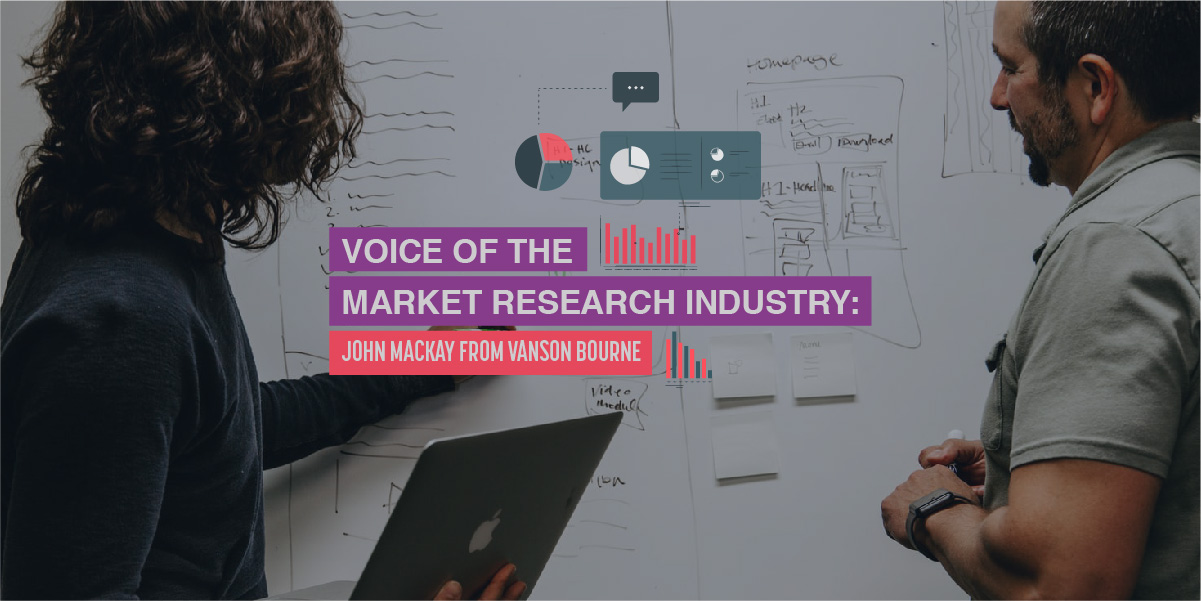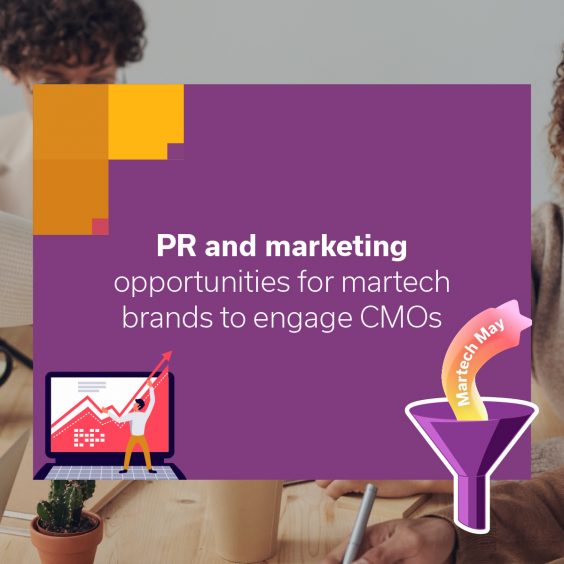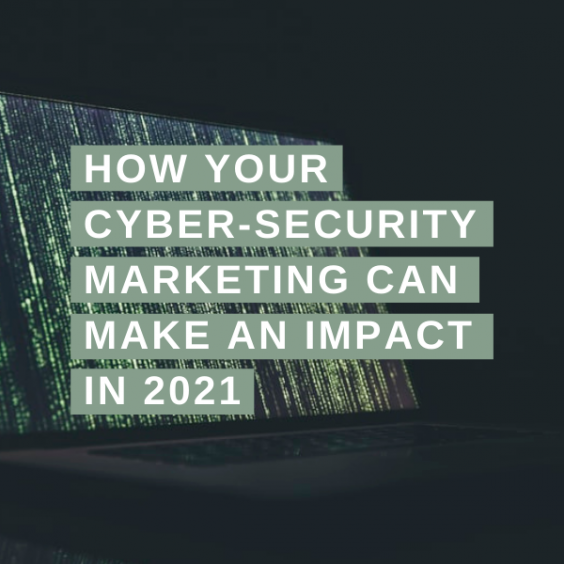We all know data is what makes the world go round. Businesses have long relied on market research to generate key proof points that can be used in wider marketing campaigns, or to uncover data that provides a deeper understanding of their industries, customers and competitors.
This reliance on data-driven content has increased over the last 12 months or so, during which the COVID-19 pandemic has widely impacted IT decision makers and their organisations. For example, the percentage of ITDMs consuming webinars, online surveys and eBooks more than they did before the pandemic stands at 56%, 37% and 28% respectively.
To shed more light on how businesses have adapted, we spoke to John Mackay, head of marketing and design at technology market research firm Vanson Bourne who conducted this research. John also discusses the role of research in the current climate and offers his top tips for insightful data-driven content.
Why did you conduct this research? Did the findings surprise you or are they what you expected?
This was a follow-up to research we conducted in April. Back then we wanted to get a picture of how IT decision makers (ITDMs) thought their companies were reacting in the early stages of lockdown – the initial impacts they faced and how they were trying to urgently adapt.
With this latest research, we posed some of those questions again but also asked them to consider where they are now and how things had gone vs. what they initially predicted. Interestingly, most were positive about how they’d adapted and, in many cases, were surprised at just how well they had.
From both sets of results, we’ve been classifying organisations into one of four broad stages of reaction to the disruption caused by COVID-19: adapting, optimising, formalising and strategising. While in April most were still in that ‘adapting’ phase, we see now that more are moving along into ‘optimising’ and beyond as they start to look past the urgent present and into the future.
While challenges and uncertainty undoubtedly remain, it’s encouraging to see signs of resilience, adaptability and cautious optimism among ITDMs. The findings tell us that technology and digital content are central to that – both expanding investment in the former, or growing consumption of the latter.
In your opinion, has the role of market research changed in the current climate? If so, what should technology companies now do to use it to their advantage?
I’d say it’s even more important – but given what I do, you might think he’s bound to say that!
To put it in context, we’ve seen from our August survey findings that digital content consumption is up for ITDMs since the start of the year – and that’s across a range of mediums, from video to webinars, eBooks to infographics, blogs to surveys. What’s more, we found that among the most important elements that encourage consumption are: content from a trusted source, easy to digest or share, regularly updated, and based on research findings.
And so, given this ever-growing thirst for content, conducting market research offers a great way to generate trusted insights, to challenge preconceptions and to explore new areas. The trust factor is vital here. Without wanting to get too political, we live in a time where it can be difficult to distinguish what’s accurate and what’s not, but data doesn’t lie.
A frequent request we get from clients is “Find me something unique” but that can be tricky to do in such a fast-moving area like technology. Instead, tailoring insights and content to your specific audience can help them to really stand out – whether by industry, by region or other demographics.
Finally, given the global situation we find ourselves in, it’s critical to not stoke further fears and doubts unnecessarily. We’re are all bombarded enough in the news with negative stories, so content and campaigns that offer constructive guidance and realistic hope have the opportunity to cut through the rest. Of course, you don’t want to come across as naïve or dismissive of issues, but using robust research findings as a foundation allows you to be constructive, inquisitive and authoritative on the subject you’re sharing.
With research consumption on the up, what’s your top tip for running a successful market research campaign during the pandemic that maybe wasn’t as important pre-pandemic?
The sudden shifts in daily life last year emphasised the need for flexible planning – and conducting a successful market research campaign is no different.
Admittedly, it’s not ‘new’ advice, but it’s undoubtedly more important than ever to plan for the unexpected during a campaign. As always, decide as much as you can up front – but allow for greater flexibility later with content deliverables and timings. Maybe you were planning for a 20-page whitepaper a few months ago, when perhaps something more agile – a short series of infographics or videos perhaps – might work better today.
The key component is to plan for a family of content – don’t be over-reliant on one single hero asset which might not meet the moment when it’s ready for launch. Instead, give yourself options. Market research findings are perfect for that as results can be used, segmented and re-ordered in lots of ways to tell different stories to different audiences, in different situations.
At VB, we specialise in technology-focused research, mainly asking the opinions of ITDMs. But perhaps now in particular there’s a need to consider opinions from across the business when conducting research – given everyone is impacted in some way by technology. Some of the most powerful and compelling research findings are those that take on board multiple perspectives to discover the differences and similarities faced.
How can technology companies get ahead of the competition in discovering trends in the market and sharing insightful data-driven content?
As I touched on earlier, a common research goal that we see is for something ‘new’, but it’s often hard to ask questions in a truly unique way, so the differentiator can often be found in what you do with the end results.
Tracker or index studies that take a snapshot of attitudes at regular intervals are always a powerful tool to monitor trends and make predictions based on data collected over time. As are the use of maturity models or persona segmenting – they can squeeze that little bit extra out of research findings and really help drive engagement in your audience, as they can plot themselves and their company within the results, assessing their position vs. their market or region.
In addition, exploring the views of different respondent types (e.g. IT vs. business decision makers) or employee groups (e.g. senior managers vs. junior staff) can help to unlock a broader spectrum of insights and add different flavours to findings.
As we found in our recent survey, being able to share trusted insights that are up to date and digestible is key. Right at the start of a project, from the questionnaire design phase and beyond, this should be kept top of mind.
Please can you describe your role at Vanson Bourne?
I joined Vanson Bourne just over five years ago as a research manager, responsible for working with our clients on market research campaigns end-to-end, from questionnaire design to the delivery and analysis of the results. It was a role that took me around the world, presenting and sharing findings with our clients and their customers.
In my current role, I now manage a fantastic team of researchers and I’m also responsible for the design of our content deliverables – both for our clients and our own marketing. A few years ago, we brought design in-house and it’s proven a big success to align the development of the ‘words’ (research findings) and the ‘pictures’ (design work) more closely together.
Which company has taken your attention lately due to their content? What are they doing well?
Two recent examples come to mind here – one work-related, one personal – with both having taken a unique approach to engaging their audience.
To start with the work-related example, earlier this year we worked with Juniper Networks on research for its campaign around heightened enterprise security in these times of remote working. We worked with its team from questionnaire development through to the creation of an executive summary and infographic about the findings, but what really stood out was what it did next. In one of the most unique ways I’ve seen of conveying research findings, it commissioned an artist to draw the findings ‘live’ on video while one of the team talked through them. The end result was a collage of information and insights – and above all, a really unique asset.
More personally, linked to my passion for all things outdoors, is the clothing company Finisterre’s #WhereItTakesYou campaign. Initiated by a request across its digital channels for customers to share the adventures they’ve been on whilst using Finisterre clothing under the aforementioned hashtag, it then chose examples to focus in on. Engaging customers by placing them at the centre of the narrative and allowing them to tell their own personal story linked to the brand was a really compelling idea and has led to an on-going series of story-driven videos, blogs and social content.
What’s one tool you couldn’t live without to do your job?
Narrowing it down to just one is hard given we’re all so reliant on tools and technology these days. If I’m allowed to cheat slightly, I’d split my answer into two: collaborative tools and creative tools.
For collaboration, Microsoft Teams and Trello have proven invaluable to our company during this new, remote way of working. Teams keeps us connected through video calls and project chats, while Trello keeps us organised as a place to share to-do lists and action items.
Creatively, not a day goes by without immersing myself in one of the Adobe Creative Cloud applications – in particular, Illustrator and InDesign with which we create most of the designed assets that arise from the research we do.
Want to hear what CMOs across the tech industry had to say about Vanson Bourne’s latest research on IT decision-makers news consumption habits? Check out their video interviews on our Remotely Interesting Road Trip here.



